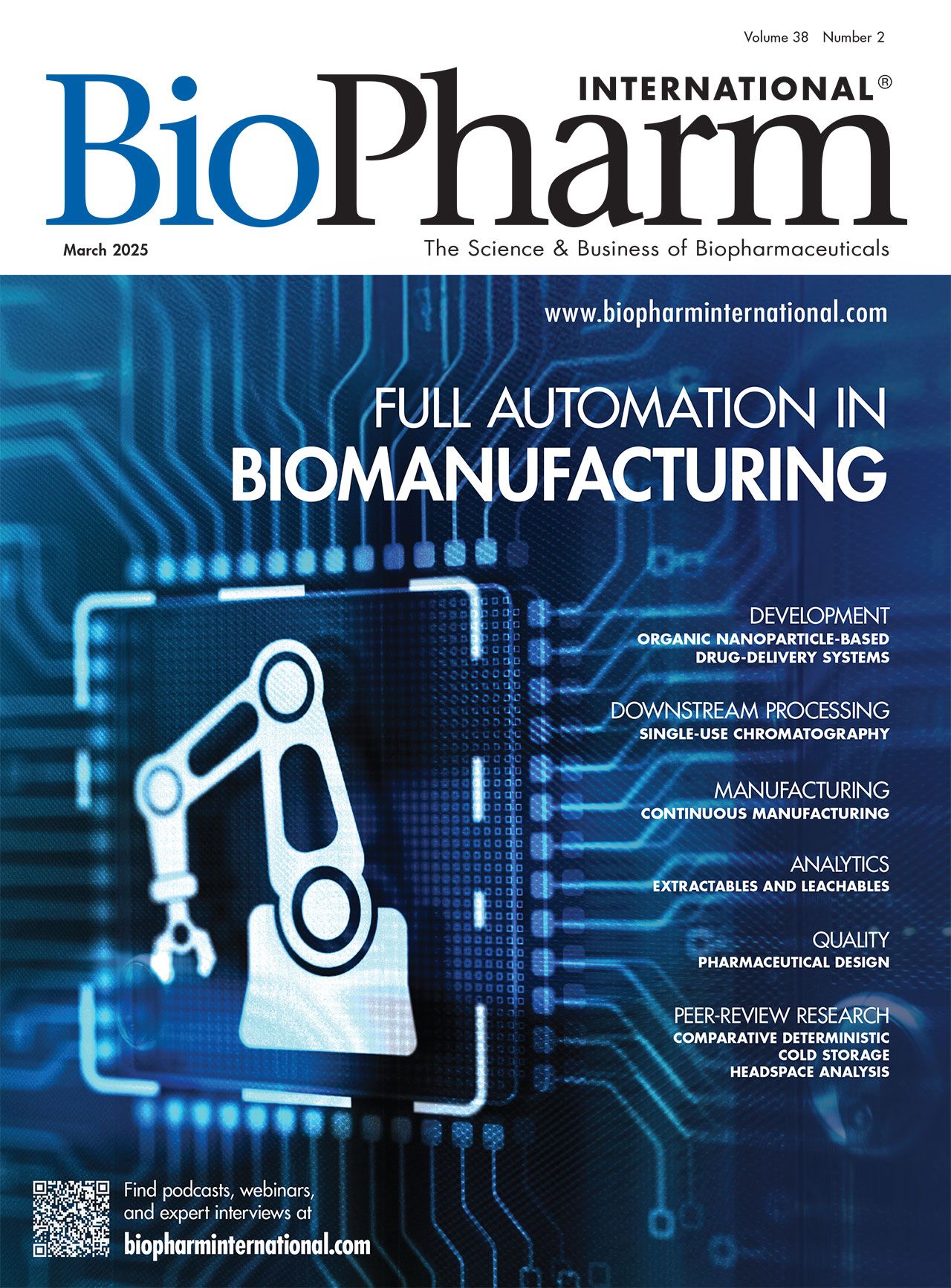Advancing Biotherapy Production with Continuous Manufacturing
RNA modalities will especially benefit from fuller adoption of continuous manufacturing platforms.
IM Imagery – Stock.Adobe.com

The forward movement of the biopharma industry is driven by fast-paced advancement in manufacturing technology innovations. As manufacturing technology advances, so does the shift to continuous manufacturing (CM), a process that enables real-time monitoring, improved scalability, and enhanced quality control.
As the biopharmaceutical industry increasingly adopts CM, it is undergoing a transformative shift. In the current environment, one of the most significant applications of CM is in the production of RNA-based therapeutics, including messenger RNA (mRNA), self-amplifying RNA (saRNA), and circular RNA. In an interview with Aaron Cowley, chief scientific officer at ReciBioPharm (1), Cowley noted how industry leaders, including ReciBioPharm, have spearheaded the development of CM platforms for RNA manufacturing with funding from FDA. These CM platforms hold the promise of significantly increasing production efficiency while maintaining rigorous quality standards.
influence of the COVID-19 pandemic
In particular, the COVID-19 pandemic sharply highlighted the necessity of having rapid and scalable RNA manufacturing to meet global vaccine demand at the time. Traditional batch manufacturing poses bottlenecks that hinder timely drug availability. In comparison, CM integrates all unit operations into a seamless and continuous process and allows for real-time release and significant reduction in production timelines (2).
One of the key advantages of CM in RNA therapeutics is its ability to maintain small-scale yet high-throughput production. And, unlike monoclonal antibodies or conventional biologics that require thousands of liters in bioreactors, RNA production runs at much smaller scales—typically a few hundred milliliters to several liters per batch (3). CM becomes an ideal approach to tackling production of RNA-based products because it facilitates rapid adaptation and scale-up while at the same time minimizing waste and inefficiencies.
A significant innovation in CM for RNA therapeutics is the integration of in-vitro transcription (IVT) into a continuous process. Traditionally, IVT reactions are performed in batch mode, in which RNA synthesis is followed by downstream purification and formulation. But the continuous integration of IVT with purification and fill/finish operations allows for real-time monitoring and control, which leads to enhanced product consistency and yield (4).
“Being able to have eyes on the process and the product as it goes along, the full train of manufacturing, and be able to release that real time—is the overall goal that we are after,” said Cowley in the interview (1), explaining that if another pandemic comes along there won’t be a bottleneck in manufacturing, and that an RNA-based vaccine, for example, will be available and the manufacturing process will still be able to produce extra material.
Modular and flexible manufacturing systems
The flexibility of CM, meanwhile, allows for modular process design, which enables manufacturers to switch between different RNA modalities without major overhaul of infrastructure. This ability to switch between RNA modalities is particularly important as RNA therapeutics expand beyond vaccines to include gene therapies, cancer immunotherapies, and rare disease treatments. Having the ability to modify purification steps—such as adjusting the number of chromatography columns (based on impurity profiles)—will ensure that different RNA therapeutics can be produced efficiently and on a single platform (5).
“The easy part is to get a process integrated. The most challenging part is the digital architecture,” emphasized Cowley (1). “It’s machine learning, models, and PAT [process analytical technology] control software, which wil drive the manufacturing process. That’s what’s key. it’s [the] intelligent manufacturing [that] we’re after here.”
The scalability of CM also enables the manufacture of RNA therapeutics at consistent quality—from clinical development through to commercial-scale production. However, rather than traditional scale-up approaches, which require significant process revalidation, CM allows for scaling out, in which production capacity can be increased by extending operational time rather than increasing bioreactor sizes (6).
Future of CM and challenges
However, despite the advantages that CM has demonstrated so far, the transition from traditional manufacturing to fully CM processes will continue to present challenges. Small and medium-sized enterprises will particularly face obstacles, including high initial investment costs, integration complexities, and the need for specialized expertise—factors that remain barriers to widespread adoption. CM has gained increasing recognition by regulatory agencies such as FDA and International Council for Harmonisation (ICH), which acknowledge CM’s potential and have issued guidelines (e.g., ICH Q13) to facilitate implementation (7).
Overcoming the challenges to full CM adoption will require strategic collaborations between biopharmaceutical companies, contract manufacturing organizations/contract development and manufacturing organizations, and technology providers. These collaborations will be crucial moving forward. In addition, standardization of CM technology platforms, especially those that incorporate modular automation, AI-driven process control, and cloud-based data analytics, will further enable CM adoption, which is particularly important for RNA-based therapeutic production (8).
References
1. Spivey, C. Biopharma’s Progress with Continuous Manufacturing in mRNA (BIO 2024). BioPharmInternational.com, Sept. 27, 2024.
2. Plumb, K. Continuous Processing in the Pharmaceutical Industry. Chem. Eng. Res. Des. 2005, 83 (A6), 730–738.
3. Kempf, H.; et al. RNA Manufacturing and Process Development: Current Trends and Future Outlook. Trends Biotechnol. 2020, 38 (10), 1168–1180.
4. Karmakar, S.; et al. Continuous Manufacturing of RNA Therapeutics: Opportunities and Challenges. Biotechnol. Adv. 2022, 53, 107840.
5. Uhl, P.; et al. Flexible Manufacturing Strategies for RNA-Based Therapeutics. Mol. Ther. 2021, 29 (7), 1982–1997.
6. Lee, S. L.; et al. Modernizing Pharmaceutical Manufacturing: From Batch to Continuous Production. J. Pharm. Sci. 2020, 109 (1), 1–9.
7. FDA. Guidance for Industry, ICH Q13 Continuous Manufacturing of Drug Substances and Drug Products (CDER, March 2023).
8. Konakovsky, S.; et al. Smart Manufacturing Approaches For Continuous Biopharmaceutical Production. Curr. Opin. Biotechnol. 2022, 74, 100–108.
About the author
Feliza Mirasol is science editor at BioPharm International®.
Article details
BioPharm International®
Vol. 38, No. 2
March 2025
Pages: 19–20
Citation
When referring to this article, please cite it as Mirasol, F. Advancing Biotherapy Production with Continuous Manufacturing. BioPharm International 2025, 38 (2) 19–20.
